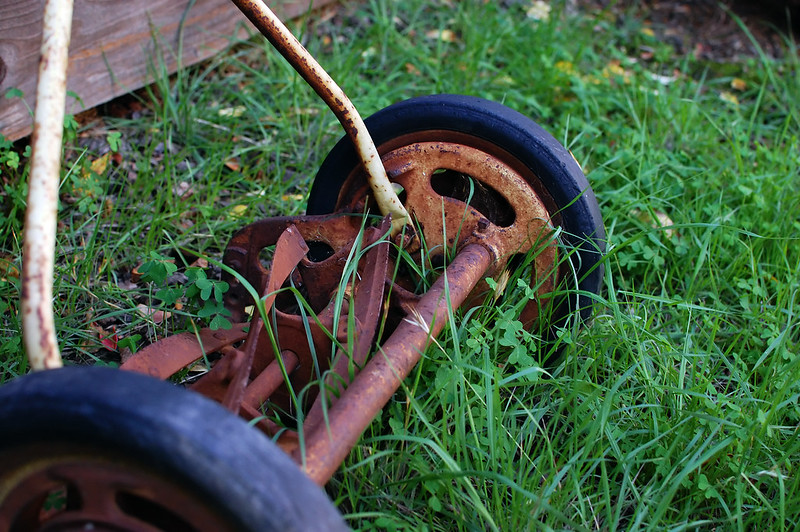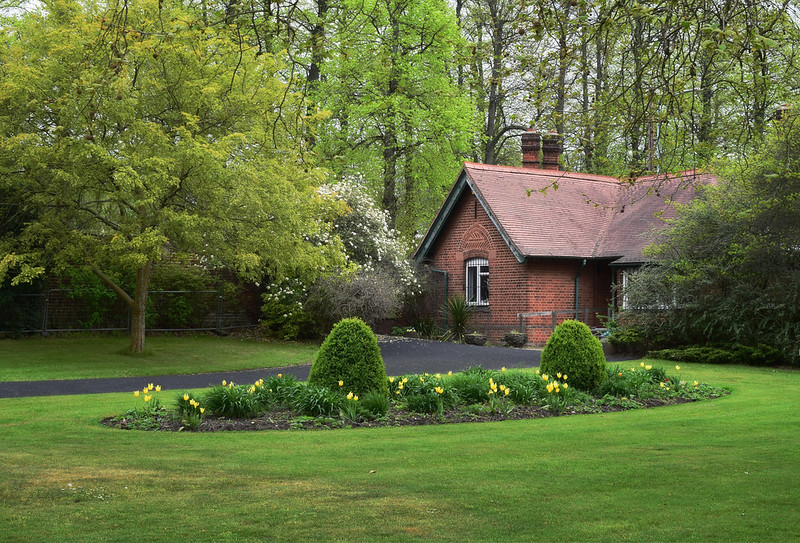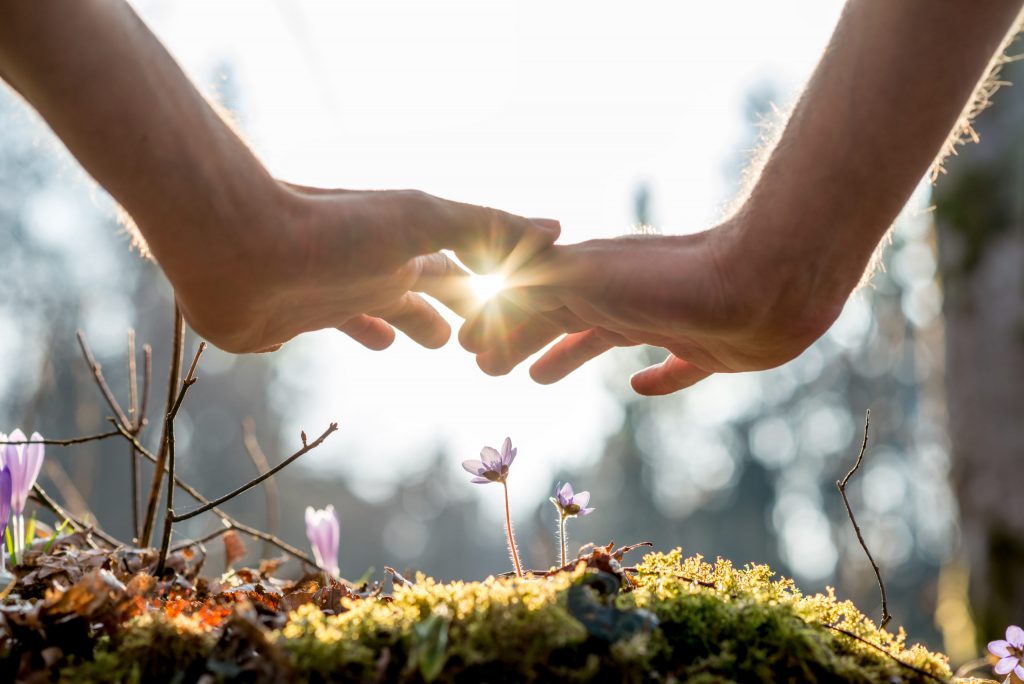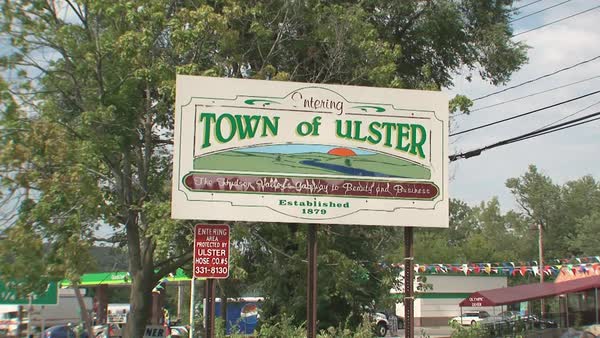The choices we make at our homes determine the amount of energy we use. Maybe you think about turning off the lights…but have you thought about your yard? Cue: energy-efficient landscaping.
An energy-efficient home is good for the environment and saves you money. When you think of energy-efficiency, though, what do you picture? Many of us imagine indoor solutions: turning off lights, taking shorter showers, and unplugging unused devices. These are all fantastic, but they leave out another important energy-saving strategy that can go a long way: your landscaping. The best energy-saving tactics for outside your home (a.k.a energy-efficient landscaping) can also make your lawn a little greener, without breaking the bank.
Table of Contents
Add Large Plants and Trees
Adding plants and trees to your property not only adds beauty and value to your home, but it can also help you cut down on your heating and air conditioning costs. Landscaping that includes shady trees and trellises with climbing vines can also serve as a windbreak in the winter–an especially effective move when planted in front of windows or just outside outer walls.
Whenever possible, opt for local varieties of plants and trees. Native plants are low maintenance, drought-resistant, and reduce pest problems. Bonus: since local plants and trees naturally flourish in your area’s climate, you won’t be fighting against mother nature to keep them alive.
Rethink Your Watering Practices
Your intentions are good–you want your plants to thrive, so you water them frequently. But here’s a secret: a healthy lawn and garden don’t usually need as much water as you think. And water conservation movements aren’t without cause: using less water means spending less money and energy pumping that water to your home, and it means leaving more water in the natural places it belongs.
Energy-efficient landscaping doesn’t just save you money on your electrical bill, but on your water bill, too! Your lawn and garden don’t need watering every day. It’s easy to maintain them using less water by watering deeply, but less frequently, so the water has a chance to reach the grassroots. More efficient water use means less use in total.
When you water is just as important as how much you use. If you water during the heat of the day, some of the water will evaporate, leaving your grass thirsty. Watering at night, meanwhile, can result in mold and mildew, and leave your lawn susceptible to disease and pests. Watering early in the morning when temperatures are lower allows your lawn and plants to soak up the moisture. This makes for a healthier lawn with fewer resources needed to maintain it.
If you really want to get “into the weeds,” check your property’s evapotranspiration (ET) rate. This is the rate at which water evaporates from your soil and is released through the leaves of your plants. The ET rate will tell you how much water you should add to your soil during each watering. Your local water district or cooperative extension service can help you figure out how much water your landscape needs–or scope out your region online through the U.S. Geological Survey.
Practice Xeriscaping
Xeriscaping is a method of landscaping designed to conserve water. Though it was originally developed for properties in dry regions, you can use its principles anywhere. And while its name may be complicated to pronounce, the basic rules are easy to follow. When making landscaping decisions, make sure to:
- Group together plants with similar watering needs
- Research sod and grass seed specific to your geographic locale
- Use mulch to reduce evaporation and hinder weed growth
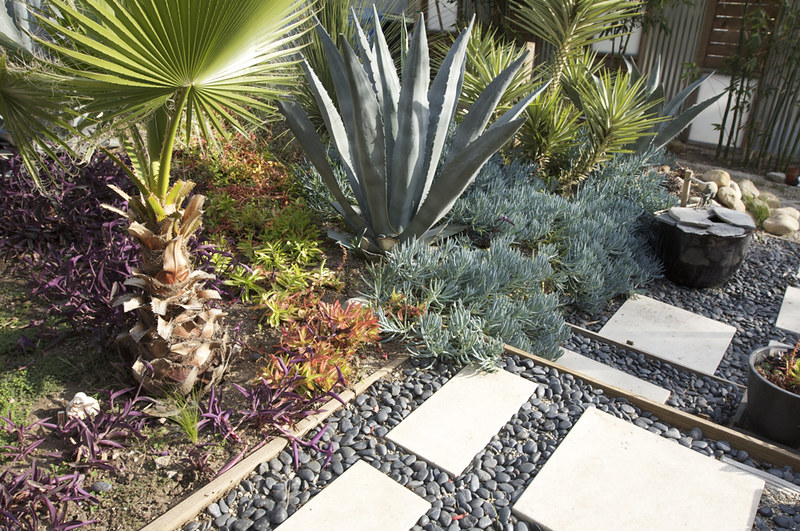
Install Solar Panels
Solar power is one of the cleanest and most sustainable types of energy available today. Your property’s layout will determine the best location for solar panels, so if you’re thinking about solar, take that into account before adding other landscaping features.
For instance, while planting shade trees can bring down your energy use (especially during the summer), it can also make your home a bad candidate for rooftop solar panels if they cast shade over your roof. In that case, you could consider ground-mounted panels on your property if you have the space and the right type of land.
In the past, solar panel installation was cost-prohibitive for almost all homeowners. Fortunately, solar technology gets less expensive and easier to install every year, opening up the opportunity to more people. Some groups of homeowners are even pooling their resources and taking advantage of solar power as a neighborhood so they don’t have to install anything on their own homes.
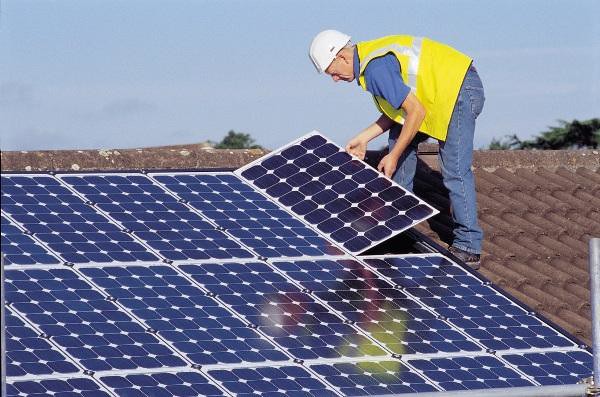
Energy-efficient Landscaping: Rethinking Your Lawn
When most of us picture a house, it’s often accompanied by an expansive lawn full of thick green grass. But the standard lawn is not always the best choice for the environment.
Thick, green grass needs mowing, watering, fertilizing, pest control, and other types of maintenance. This makes traditional lawns a much less eco-friendly choice than other popular lawn alternatives, including groundcovers and ornamental grasses, which people commonly use in areas where lawns are difficult to maintain. Some homeowners in dryer areas use clover mixes (a plant that grows more efficiently), along with larger gardens and stone pathways, as an alternative to maintaining a full lawn of grass. In some places, these changes can reduce total property water consumption by as much as 50%. That’s what we call energy-efficient landscaping!
